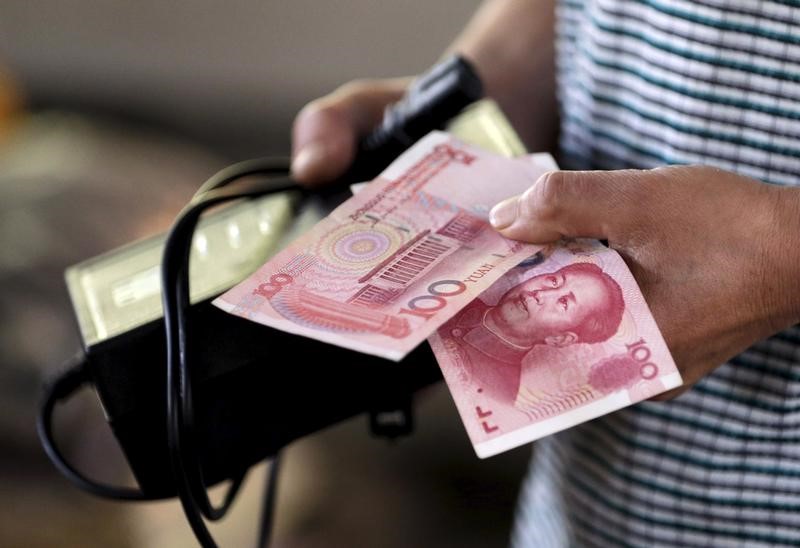HONG KONG (Reuters) - China's yuan is likely to see more volatility against the U.S. dollar this year after its foreign exchange market operator changed the way it calculates a key yuan index by nearly doubling the number of foreign currencies in its basket.
The China Foreign Exchange Trade System (CFETS) said last week it was changing the composition of the CFETS basket that is used to set the yuan's daily value. Starting on Jan. 1, the number of currencies in the basket was increased to 24 from 13.
China has been promoting use of the index, which references a basket of currencies of its trading partners, partly to divert attention from the yuan's slide against the dollar, which comes as U.S. President-elect Donald Trump has threatened to label Beijing a currency manipulator.
The yuan
The direct impact of the new basket is that the yuan index may hold up amid broad dollar strength as the impact of a big rise in the dollar will be offset by the impact of emerging market currencies' weakness on the yuan index, said OCBC analysts in a note.
"However, the new weight also implied a possible more volatile USD/CNY should China continue its basket anchor policy," the analysts said.
This view was echoed by ANZ analysts and some traders.
"Given a higher weighting of inherently volatile emerging market currencies, we expect higher volatility in the dollar/yuan fixing and spot rate, with uncertainty in U.S. policy (particularly U.S.-China relations) already likely to boost volatility in 2017," ANZ analysts said.
China's central bank set a slightly stronger than expected daily fixing for the yuan on Tuesday after the changes to its currency basket that are expected to make the yuan index less influenced by moves in the dollar.
On the first trading day of 2017, the People's bank of China (PBOC) fixed the yuan midpoint at 6.9498 per dollar, the first fixing after China changed the composition of the currency basket used to determine the yuan's value.
Some traders said their estimate of the yuan midpoint based on the new basket was around the 6.96 area, and the stronger-than-expected fixing showed that yuan stability would remain a priority for the central bank this year.
State banks were also seen offering dollars in the market to support the yuan as demand to buy dollars was still strong.
The basket currency change is aimed at improving the mechanism generating the CFETS RMB Index <.CFSCNYI> and making the CFETS basket more representative, the China Foreign Exchange Trade System (CFETS) said on Thursday.
The nominal dollar weighting in the new basket has been reduced by 4 percent, according to OCBC calculations.
If taking the newly included Saudi riyal and Emirate dirham as well as the existing Hong Kong Dollar, which are all pegged to the U.S. dollar, into account, the effective dollar weighting has been cut to 30.54 percent from 32.95 percent, they said.
The yuan changed hands at 6.9548 per dollar at midday, 0.1 percent weaker than the previous close.
The U.S. dollar held firm on Tuesday as the prospect of rising U.S. interest rates this year kept sentiment bullish. [FRX/]

The yuan is expected to plumb its lowest level against the dollar in nearly a decade this year on sustained capital outflows and dollar strength, according to a Reuters poll in December.